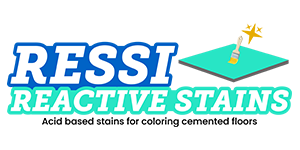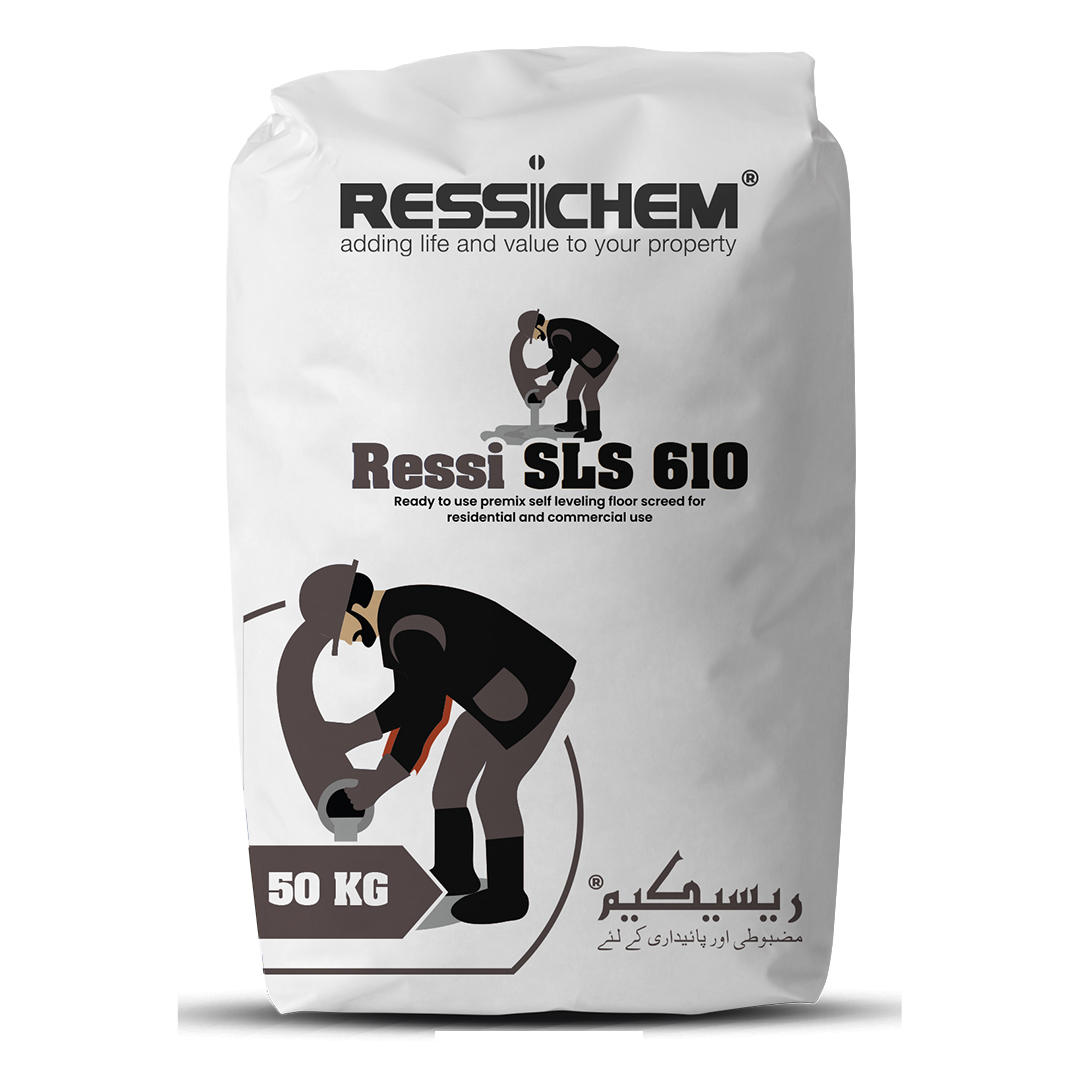Application Of Acid Staining Floors
Summary of application
STEP 1: Surface preparation.
STEP 2: Application of Ressi Reactive Stains.
STEP 3: Washing
STEP 4: Washing with Ressi Neutralizer.
STEP 5: Application of a protective sealer.
Detailed Description
Acid-Stained floors are created using acids from metallic salt compounds which penetrate the concrete & react with the free lime, chemically changing the color to produce unique & permanent variegated effects. Ressichem acid stains create variable, diverse, or translucent effects that are like the nuances of natural stone or the aged appearance of a weather worn coating.
The result is unique for each surface and cannot be duplicated with other dyeing materials. Concrete loses its dull appearance and takes on a rich and natural beauty.
Step 1: Surface preparation.
Surface preparation includes all the preparation which is required to lay the concrete floor prior to the pouring of the concrete slab. As per the requirement of the slab, the surface preparation may vary. The sub-base for the concrete should be well drained and have adequate and uniform load bearing characteristics. To reduce the likelihood of cracking, the sub-base must be graded to ensure an even thickness of concrete. At the time of concrete placement, the sub-base must be moist but have no standing water & should be well consolidated. If necessary, the sub-base should be dampened with water in advance of concreting, to avoid uneven suction and premature drying out of the underside of the slab.
Ressi Reactive Stains are durable enough for commercial applications like restaurants, showrooms, & retail spaces. Ressi Reactive Stains can be used on new or old concrete once fully cured. The colors produced in each area will be unique in character. Multicolored intensities that become a permanent part of the concrete. Since the reactions of Ressi Reactive Stains are different on every concrete floor. It is advised to apply a small sample area prior to full area application.
Ressi Reactive Stains only works when it has direct contact with the concrete. Make sure there are no sealers, waxes, or other contaminants on the concrete surface. If there are no contaminants over the concrete & the concrete itself is smooth that it does not absorb any moisture, it is advisable to apply Ressi Acid itch to open the pores of the concrete prior to the application of Ressi Reactive Stains. Please refer to the technical datasheet of Ressi Acid itch for further information on the product.
Step 2: Application of Ressi Reactive Stain
Once the surface has been dried, cured & of a sound nature, Ressi Reactive Stains is applied over the concrete surface.Ressi Reactive Stains are a specially formulated blend of hydrochloric acids & metallic salts. The acid opens the capillaries of the concrete, allowing the metallic salts to react with the free lime deposits & therefore staining the hydrated lime imbedded in the concrete. Ressi Reactive Stains is applied using brush, roller, or spray applications, whichever is suitable enough for the appropriate color and finishing.
Step 3: Washing
Once the application of Ressi Reactive Stains has been done, it is recommended to thoroughly wash the surface with sweet potable water to make sure any excess material of Ressi Acid itch has been cleared off (if applied). Once proper washing has been done, Ressi Neutralizer can be applied (if needed) to remove any remaining excess material of Ressi Reactive Stains over the concrete surface
Step 4: Washing with Ressi Neutralizer
Once proper washing of the acid-stained surface is done and all the excess acids have been washed away, there is usually not much need to neutralize the surface, however for large areas where it is unsure if proper washing has been executed or not, Ressi Neutralizer can be lavishly applied in 2 coats over the surface treated with Ressi Reactive Stains. Once the surface has been neutralized, excess salt may appear over the surface which once again can be washed with Potable water. Once the surface has been washed and is bone dry, further application of protective sealers can be done over the surface.
Step 5: Application of a protective sealer
There are a variety of sealers that can be applied to protect the acid-stained floor. The selection of an appropriate sealer depends on the type of aesthetic and durable use required off the floor. The following sealers compatible with our Reactive stains are available with Ressichem.
1. Silblock: This is a water-repellent sealer which does notchange the aesthetics of the floor but makes it resistant to water absorption to a certain extent.
2.Stone Guard: This is a stain resistant and water-repellent sealer and slightly enhances the richness of the acid stain. But the richness of the color is subject to application, site condition and the selection of the stain color.
3.Ressi Chrome Seal: This is a semi-gloss film forming sealer which is also water repellent. With regular UV Exposure and wear and tear, this sealer tends to fade off with time needing regular re-application from time to time if the richness of the color needs to be maintained.
4.Ressi Dura Coat: High gloss film forming sealer which is also water repellent. With regular UV Exposure and wear and tear, this sealer tends to fade off with time needing regular re-application from time to time if the richness of the color needs to be maintained.
For the selection & availability of appropriate sealers, please contact Ressichem representati

1: Surface preparation.
2: Application of Ressi Reactive Stains.
3: Washing
4: Washing with Ressi Neutralizer.
5: Application of a protective sealer.




